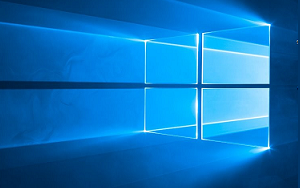Google Chrome, a widely used web browser, sometimes encounters unresponsiveness. This article explores advanced solutions to troubleshoot and fix Chrome not responding errors, ensuring a seamless browsing experience.
Effective Solutions for Chrome Not Responding Issues
Google Chrome is one of the most popular web browsers globally, known for its speed and efficiency. However, users sometimes experience a common issue where Chrome becomes unresponsive. This can disrupt your workflow and cause frustration. In this article, we will explore various methods to troubleshoot and resolve Chrome not responding issues.
1. Initial Troubleshooting Steps
Before diving into more complex solutions, try these basic troubleshooting steps:
- Restart Chrome: Close Chrome completely and reopen it. This simple step can resolve minor glitches.
- Check Internet Connection: Ensure your internet connection is stable. An unstable connection can cause Chrome to become unresponsive.
- Restart Your Computer: Restarting your computer can resolve temporary system issues affecting Chrome.
2. Clear Cache and Cookies
Accumulated cache and cookies can slow down your browser and cause it to become unresponsive. Follow these steps to clear them:
- Open Chrome and click on the three vertical dots in the top-right corner.
- Select Settings from the dropdown menu.
- In the Privacy and Security section, click on Clear browsing data.
- Choose the time range and select Cookies and other site data and Cached images and files.
- Click Clear data.
3. Disable Extensions
Extensions can enhance your browsing experience, but some may cause Chrome to become unresponsive. Disable them to identify the culprit:
- Go to the Chrome menu and select More tools, then Extensions.
- Toggle off the switch for each extension to disable them.
- Relaunch Chrome to check if the issue persists.
- Re-enable extensions one by one to identify the problematic one.
4. Update Chrome
Running an outdated version of Chrome can lead to performance issues. Ensure you have the latest version installed:
- Open Chrome and click on the three dots in the upper right corner.
- Navigate to Help > About Google Chrome.
- Chrome will automatically check for updates and install them if available.
- Restart Chrome to complete the update process.
5. Use Chrome's Built-in Task Manager
Chrome has a built-in task manager that can help you identify and terminate problematic processes:
- Press Shift + Esc or go to More tools > Task manager.
- Identify processes consuming excessive resources.
- Select the process and click End process to terminate it.
6. Reset Chrome Settings
If the issue persists, resetting Chrome to its default settings can help:
- Go to Settings and scroll down to Advanced.
- Under Reset and clean up, click Restore settings to their original defaults.
- Confirm by clicking Reset settings.
7. Check for Malware
Malware can affect Chrome's performance. Use Chrome's built-in malware scanner to check for threats:
- Open Settings and scroll to Advanced.
- Under Reset and clean up, click Clean up computer.
- Click Find and let Chrome scan for harmful software.
8. Reinstall Chrome
If all else fails, reinstalling Chrome can resolve persistent issues:
- Uninstall Chrome from your computer.
- Download the latest version from the official website.
- Install Chrome and check if the issue is resolved.
Conclusion
Chrome not responding issues can be frustrating, but by following these detailed steps, you can resolve the problem and enjoy a smoother browsing experience. Regularly updating Chrome and maintaining your system can prevent future occurrences. If the problem persists, consider reaching out to Google Support for further assistance.







